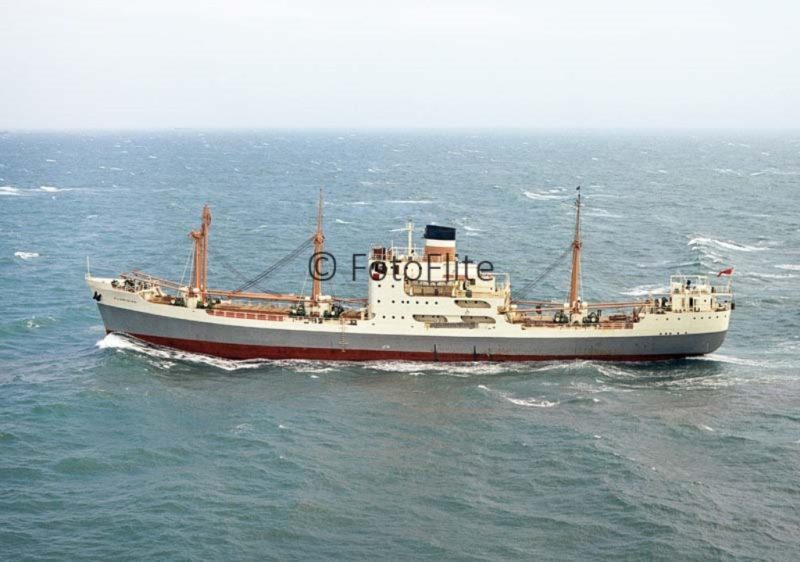
British sailing packet ships owned by the British Government left Liverpool, London and other British ports with the mail and some cargo for Gibraltar, Malta, Alexandria and Cyprus in the early 19th century. By the mid 19th century, commercial steamers and sailing ships were used on regular Mediterranean routes to at least six Portuguese ports, seven Spanish ports, ten Italian ports, seven French Mediterranean ports as well as to Gibraltar, Algiers, Tunis, Malta, Alexandria, Limassol, Larnaca, Beirut, Piraeus, Patras, Smyrna, Syra, Istanbul, Jaffa, Haifa, Odessa and other Black Sea ports.
The main and largest fleets were those of Ellerman & Papayanni Lines, MacAndrews & Company, Manchester Liners and Prince Line Mediterranean services, Cunard Line Mediterranean services, and Moss Hutchison Line, which took in the General Steam Navigation Co. Ltd. I have written separate articles on Moss Hutchison Line detailing the extensive Moss Line of Liverpool and J. & A. Hutchison of Glasgow fleets from the early 19th century, and on Prince Line. There were many other British shipping lines engaged in the trade e.g. Golden Cross Line, Mossgiel Steamship Co. Ltd., Borchard Line established in 1933 in the liner trades and has since used chartered tonnage to this day, and Gracechurch Line established in Newcastle in the mid 1950s with three Mediterranean liner ships and today part of Borchard Line using chartered tonnage. A current and much more recent British Mediterranean liner fleet is the ‘Red Dragon’ fleet of Charles M. Willie & Co. Ltd. of Cardiff with their large fleet of Mediterranean traders of up to 4,800 dwt with ‘Celtic’ prefixes to their nomenclature.

ELLERMAN & PAPAYANNI LINES
Georges Papayanni arrived in London in 1832 to establish a Greek commodity house dealing mainly in the import of dried fruit as well as the export of goods and machinery from the industrial heart of the North of England. He transferred his business to Liverpool in 1844 with the import of cotton for the Lancashire cotton mills and the increasing export of cotton clothing. Greek chartered ships were used with his brother Basilio as his Piraeus chartering agent. Viana, Jones & Chapple inaugurated sailings from Liverpool to the Mediterranean on their steamer Rattler in 1845, with Georges Papayanni booking space on her. Georges Papayanni took British citizenship in 1852 after twenty years of successful trading with Greece, the Black Sea and the Levant, with the first owned steamer being Arcadia of 1,901 grt completed in 1852 as a brig for the service terminating at Constantinople. She carried 32 First Class passengers, and a two cylinder steam engine gave a service speed of nine knots. Arcadia was lengthened in 1875 by Thompson & Company of Newcastle, and doubled the engine power with a second single expansion steam engine and new boilers fitted to give her 43 years of service by the time she was broken up in Preston in 1898.
Thessalia and Laconia were sisters of Arcadia with three masts and were clipper bowed, with the next steamer having four masts and a barque rig in 1857 and named Agia Sophia (Queen Sophia), and was lengthened in 1872 and then sold to John Reeves Ellerman in 1901, two years before she was broken up at Livorno after a career of 46 years. The fleet grew to five ships in 1859, and with Papayanni entering the Egyptian cotton trade in 1861 it grew to nine ships throughout the 1860s and 1870s with, however, no attempt made to grow the fleet beyond this size.
The Papayanni Steamship Co. Ltd. was formed in 1897 very much as a family concern with Michael Papayanni, the son of the founder, in control along with Basilio Papayanni. However, Basilio Papayanni died in that year of 1897 and his place in the family business was taken by his son Basilio, and since the company shares were now spread across three daughters and two sons, and with no capital injection by these siblings, no ship rebuilding programme was begun.
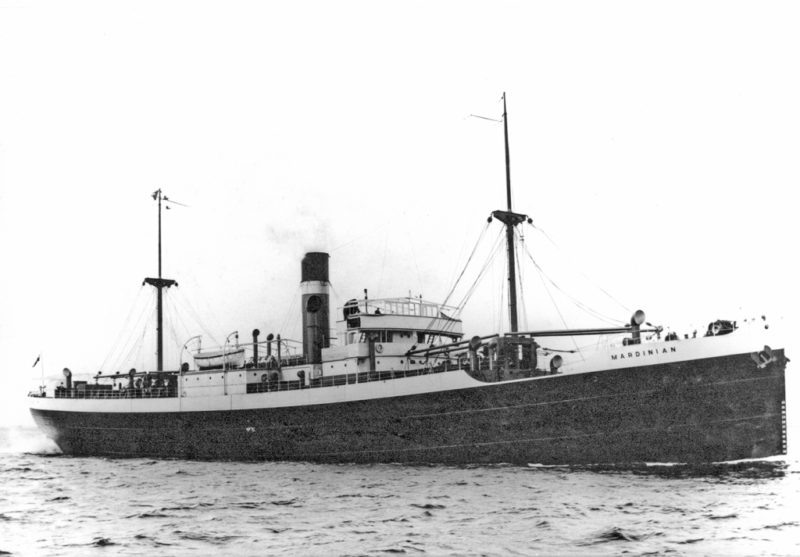
Nicholas Papayanni, the second son, negotiated the sale of the company to John Ellerman Reeves on 17th June 1901 together with eight steamers in Agia Sophia, Adalia, Anatolia, Ararat, Britannia, Laconia, Plantain and Roumelia. The price paid by Ellerman was £132,750 plus the goodwill of the trade, and on 22nd January 1902 the fleet became Ellerman owned in Liverpool but still traded as Papayanni Line until the Ellerman & Papayanni Co. Ltd. was formed in 1906, with the ships being Ellerman owned and Papayanni managed.
Whereas Ellerman & Papayanni was a West Coast loading line for the Mediterranean from Glasgow, Liverpool and South Wales ports, Westcott & Laurance was an East Coast loading line for the Mediterranean from Leith, Tyne, and London. Capt. George Westcott was a shrewd Master of a ship owned by the Greek family of Stephanos Xenos, and his ship was lying at Malta when news arrived that Stephanos Xenos had gone bankrupt. The ship was bunkered with the help of another Xenos employee named Gollcher, and it returned to London where Capt. George Westcott set up in business in 1863 with yet another Xenos employee as Westcott & Houseden. A chartering expert such as Robert Houseden and a shrewd Master such as Westcott were successful enough to purchase their first ship, the steamer Harriet Agnes of 624 grt in 1867, with Continental cargo booked by Westcott & Flint of Antwerp. The Newcastle agents of F. A. Hodgkinson & Company and J. Coull & Sons acted as loading brokers for the whole of the North and the Midlands.
The second Westcott steamer was Rhone of 1,343 grt purchased in 1879 for Westcott & Laurance, as Charles Laurance had taken over as a partner after the death of Robert Houseden, with Rhone skippered by John Richard Westcott, son of the founder. Charles Laurance died in 1889 and his place was taken by William George Westcott, the elder son of the founder. By 1901, the Westcott & Laurance fleet stood at nine ships in Avoca, Cedardene, Gulf of Suez, Joshua Nicholson, Orchis, Orestes, Perim, Plymothian and Tenedos. After the death of George Westcott, the founder, in May 1901, this fleet was then sold in December 1901 to John Ellerman Reeves giving him an East Coast loading fleet to add to Ellerman & Papayanni on the West Coast, and thus gain him a very important share of the British trade to and from the Mediterranean.
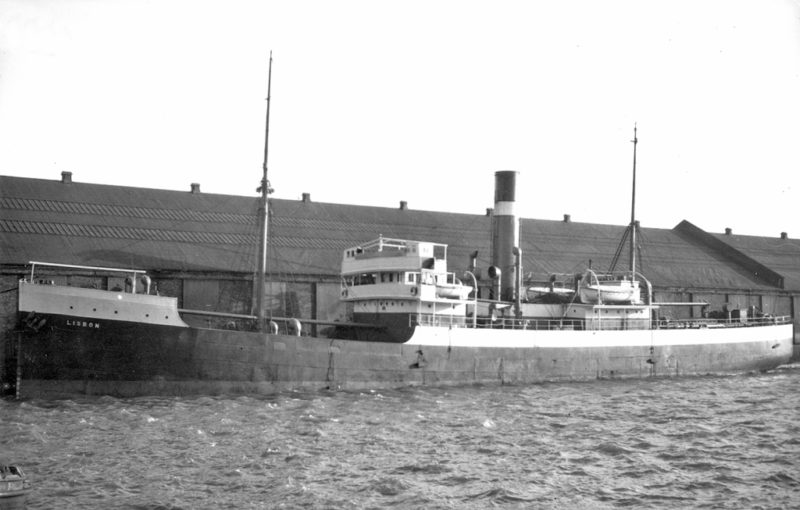
A bigger boost to the Mediterranean fleet of John Reeves Ellerman had come at the end of April 1901 when twenty Leyland Line ships operating in the Transatlantic and Mediterranean trades was sold by Frederick Leyland & Co. Ltd. via New York financier J. Pierpoint Morgan to Ellerman. Ellerman Lines Ltd. of Liverpool was the new name of the company on 31st December 1901, owning Egyptian, Arabian, Persian, Lesbian, Athenian, Algerian, Alsatian, Andalusian, Falernian, Fabian, Flaminian, Flavian, Oporto, Minho, Mexican, Almerian, Albanian, Tagus, Douro and Belgian.
The Mediterranean traders of Ellerman & Papayanni then had a mixture of names of Mediterranean ports and names ending in ‘ian’, but it was the latter nomenclature that mostly won out, with the steamer Cynthiana of 2,923 grt purchased in 1904 from the British Maritime Trust of Furness, Withy & Co. Ltd. and she was renamed Egyptian (2). Steamers also purchased around this time included Arabian (2), Persian (2), Austrian, Belgravian, Bosnian, Bulgarian as well as Sardinia and Alexandria. Sardinia sailed from Malta on 25th November 1908 for Alexandria with 152 deck passengers, mostly pilgrims bound for Mecca, however the ship reached only a mile offshore from Valletta when a cooking brazier caught fire, spreading embers down into number two hold full of nitrate, which quickly blazed, and the fire took hold of the rest of the cargo and the engine room, with the ship then circling out of control. The ship was abandoned by all onboard jumping into the sea, the lifeboats having been reduced to cinders, and the ship than ran aground and the fire then reduced the ship to a total wreck, with 120 lives lost including her Master, 16 crew, five European passengers, and almost one hundred pilgrims.
Further Mediterranean traders were completed for the company or purchased second hand from 1907, including Venetian, Castilian, Italian, Asturian, Douro, Estrellano, Lisbon, Favonian, Andalusian, Palmella, Mardinian, Falernian, Maronian, Malatian, Flaminian and Roumelian by the time World War I was declared in August 1914. A huge total of seventeen Mediterranean traders were lost from the fleets of Ellerman & Papayanni Line and Westcott & Laurance Line by the end of the war, with only eight Mediterranean survivors forming the nucleus of the post-war fleet of the two lines in 1919, with Bulgarian, Castilian, Italian, Roumelian, Venetian, Gulf of Suez together with City of Oxford, transferred from City Line, and Eden Hall, transferred from Hall Line.
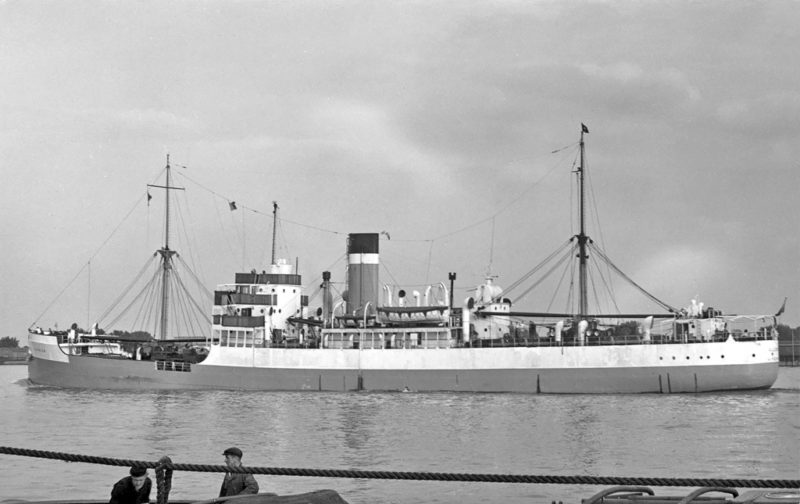
Newbuildings during the next few years from 1919 were larger five hold Mediterr-anean traders such as Andalusian of 5,462 dwt, Serbino of 5,810 dwt, Fabian of 5,570 dwt, Mardinian of 4,210 dwt, Castilian of 5,440 dwt, Destro and her sister Dido of 5,050 dwt, Egyptian of 5,082 dwt, and the purchased former Woermann Line steamer Fritz built by Blohm & Voss in Hamburg in 1914. A purchase from the Shipping Controller, she was actually the first motor vessel in the Ellerman Line fleets, however there were no spares available and the German diesel engines proved difficult in operation, with thus no recourse but to convert her to twin steam reciprocating engines propulsion within three years of her purchase. The sisters Destro and Dido of 1920 had triple expansion steam engines fed with steam from two boilers and burned 26 tons of coal daily, and had five big hatches of dimensions 31.6 feet by 16.0 feet and were equipped with a dozen derricks.
The new Algerian of 4,100 dwt from the Barclay, Curle yard on the Clyde in 1924 had a long bridge and poop deck of 184 feet in length, and was given accommodation for forty First Class passengers. Malvernian of 7,215 dwt from the Ramage & Ferguson yard at Leith was too large for the available trade to the Mediterranean when completed in 1925 and was thus transferred to Hall Line as City of Kobe. Three Ellerman City Line cargo-liners City of Lancaster of 5,173 dwt, City of Leicester of 6,030 dwt, and City of Oxford of 5,070 dwt were completed for Papayanni Line service but were actually owned by Ellerman. City of Lancaster survived World War II and was renamed Lancastrian in 1947 for her last six years of service before she was broken up at Troon in December 1953. City of Leicester was transferred to the East Coast service of Westcott & Laurance in 1942 and survived the war to be also broken up at Troon in August 1952.
The depths of the Depression had many Mediterranean traders of the 26 strong Ellerman & Papayanni Line and Westcott & Laurance Line fleets laid up, but Anatolian was completed in March 1932 at the Wallsend yard of Swan, Hunter & Wigham Richardson Ltd. as a refrigerated four hold ship with a long quarter deck hull that was different from the normal Ellerman & Papayanni Line traders. The Ellerman & Papayanni Line cargo booking office managed to find cargoes during those very difficult times for her, and for some of her fleet mates of Algerian, Andalusian, Assyrian, Bulgarian, Castilian, Cressado, Darino, Destro, Dido, Egyptian, Estrellano, Fabian, Flaminian, Gerano, Lesbian, Lisbon, Malatian, Manchurian, Mardinian, Maronian, Oporto, Palmella, Roumelian, Serbino and Volturno.
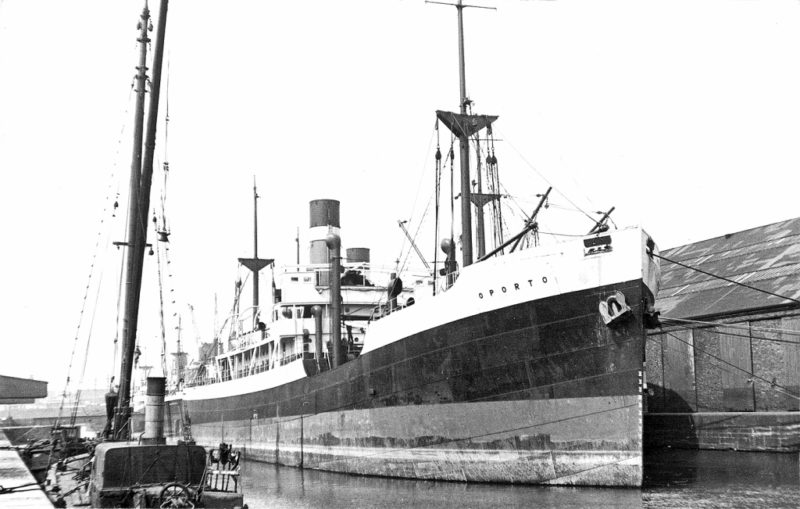
A class of six good looking five hold Mediterranean traders was completed during 1937 to 1940 of 4,275 dwt, with five from the West Hartlepool yard of William Gray & Co. Ltd. and one from the Neptune yard of Swan, Hunter & Wigham Richardson Ltd. named Malvernian, Belgravian, Corinthian, Ionian, Florian and Pandorian. The overall length was 345.6 feet, moulded beam of 50.1 feet, and moulded depth of 20.7 feet, with two decks in their hulls with the ‘tween decks adapted for fruit cargoes, and a very long bridge deck. A triple expansion steam reciprocating engine boosted by a low pressure Bauer-Wach exhaust turbine with steam raised from three single ended boilers at a working pressure of 225 psi gave a service speed of 13 knots. They had seven watertight bulkheads and one non watertight bulkhead, and an array of six engine room ventilators behind the funnel and fourteen derricks on two masts and a pair of kingposts, consisting of 11 seven tonners, 2 five tonners, and a 25 ton heavy lift derrick on the foremast. Unfortunately, only Corinthian and Pandorian survived the war from this sextet, with Malvernian acting as a Navy manned ocean boarding vessel until she was bombed and set on fire on 19th July 1941 off Spain. The majority of her big crew of 164 were captured by German minesweepers when nearing land, and a total of 57 of her crew were landed at Vigo and Corunna during the following day.
Ellerman & Papayanni Line lost nineteen ships during World War II, with also one Mediterranean trader from the Westcott & Laurance Line fleet. The survivors were joined in 1947 by Anglian of 2,870 dwt from the West Hartlepool yard of William Gray & Co. Ltd. on dimensions of overall length 295.0 feet, moulded beam of 46.2 feet, moulded depth of 17.9 feet. She was powered by a triple expansion steam reciprocating engine boosted by a low pressure turbine with steam raised by two single ended boilers at a working pressure of 225 psi to give a service speed of 10.5 knots. There was accommodation for a few passengers and the crew were all quartered ‘midships. She had a prominent radar mast atop the bridge, and the five hatches were served by two 10 ton, two 7 ton, and two 3 ton derricks.
Fleet rebuilding continued with five cargo-liners of 1,700 dwt in 1947/48 named Crosbian, Darinian, Lucian, Mercian and Palmelian from the William Gray, Swan Hunter & Wigham Richardson, and Henry Robb yards with three holds and three hatches. Six larger vessels of 4,175 dwt came from Sunderland and Ailsa yards in Egyptian, Ionian, Patrician, Venetian, Sicilian and Grecian, with the latter pair from the Ailsa yard and differed in that the triple expansion engine was low pressure only and double reduction geared through a hydraulic coupling. They could be identified in that their deck ventilators were mushroom type not cowled. Patrician was unfortunately sunk in the Straits of Gibraltar on 8th July 1963 in a collision with an American ‘Liberty’ ship.
A further six cargo-liners of 5,330 dwt were delivered during the 1950s decade in Andalusian, Maltasian, Anatolian, Castilian, Lancastrian and Almerian from the William Gray and Caledon yards. They had two decks in their hulls adapted for fruit carrying and had a big crew of 40, which put them at a disadvantage with the diesel powered Ellerman & Papayanni ships of the 1960s which needed a crew of only twenty. Florian and Flaminian of 3,550 dwt were delivered in 1955/56 by the William Gray and Henry Robb yards as five hold ships, but the smaller engines aft pair of Malatian and Catanian of 1,606 dwt had only three holds when delivered at Leith in 1958, but were adapted in 1966 to carry two dozen containers each on deck.
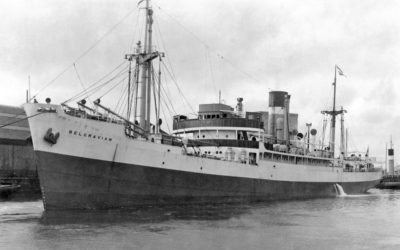
Flaminian collided off Gibraltar in September 1959 with the French tanker Floreal, with Flaminian set on fire by burning fuel but it did not fortunately enter her holds and was extinguished. Sister Florian had also been on fire, this time in dock at Liverpool in May 1956 when a fire broke out in her cotton cargo and she suffered buckled deck plates, with another fire in her cotton cargo six months later requiring the deck plating to be renewed. The five hold Arcadian completed in July 1960 by Henry Robb at Leith was of 4,450 dwt with two decks in her hold and a part third deck. After a 17 year career as Arcadian and as City of Famagusta, she was sold with her sister Rapallo of Ellerman’s Wilson Line, then renamed City of Limassol, to Associated Levant Lines Sal of Beirut and renamed Batroun and Beiteddine respectively. They were often seen unloading fruit cargoes at Dover during their Beirut ownership until both were broken up during 1986.
Ellerman & Papayanni Line had acquired the Mediterranean trades of the Mossgiel Steamship Co. Ltd. of Glasgow with steamers with ‘A’ names e.g. Alhama and Alpera in October 1958 to give them a further slice of the trade. A large number of owned and chartered engines aft smaller motor vessels were then used by Ellerman & Papayanni and Westcott & Laurance during the 1960s and 1970s, including Cortian as a palletised cargo carrier for the Oporto service which could not then take containers. An octet of bareboat chartered ‘Hustler’ class of Sea Containers Ltd. were then taken on bareboat demise charter in 1970. The five year charters of small Dutch and Danish ships ended in 1969/70, with Estremadurian of 1,921 grt the first vessel to berth at the new Gladstone Container Terminal in Liverpool in 1968 with her deck cargo of 56 containers. The Mediterranean fleet in 1973 was down to only a dozen owned and chartered vessels, and the delivery of five Ellerman Line Mediterranean traders in 1978 saw the eight ‘Hustler’ class returned off charter to Sea Containers Ltd. City of Plymouth, City of Perth, City of Hartlepool, City of Ipswich and City of Oxford carried 296 TEU of containers either on deck or in their twin holds, with fifty refrigerated containers for fruit, and traded for around fifteen to twenty years or more for Ellerman in the Mediterranean trades, including charters to MacAndrews & Company and the Iceland Steamship Co. Ltd. of Reykjavik. They ran in partnership to the Mediterranean with Manchester Clipper, Manchester Faith, Manchester Fulmar, Crown Prince and Royal Prince on Ellerman-Prince Line service on a ten day sailing rota from Ellesmere Port.
Ellerman Lines Mediterranean services were partly taken over by Andrew Weir Shipping (AWS) in October 1991, with chartered container ships with ‘City’ names used e.g. City of Glasgow, City of Liverpool, City of Dublin and City of Salerno. In December 2002, the Ellerman services of AWS were sold to Hamburg Sud with the Ellerman brand name retained until 21st October 2004 when it was announced by Hamburg Sud that the Ellerman name was to be dropped from 1st January 2005 after over 100 years of operations.
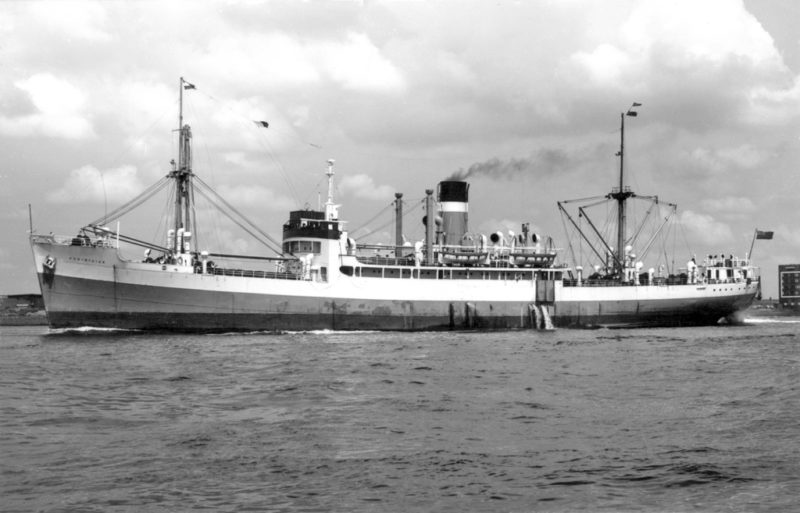
MACANDREWS & COMPANY
William MacAndrew arrived in Liverpool in 1770 as a young man from Elgin in Scotland and began selling fresh fruit from Spain, Portugal and the Azores, which had arrived in small, fast chartered schooners and brigantines. William married and of his eight children, the two youngest sons, Robert and William, eventually joined him in the family business. However, this pair of brothers disagreed in the 1830s over the apportionment of the business. William remained in Liverpool and ran the family fruit importing business, and Robert moved to London. The first steamer Actor of 319 grt was completed in 1857 by T. Wingate & Company of Whiteinch in Glasgow and registered under the British flag for two years. She arrived at Alicante on 18th August on her maiden voyage under the command of Capt. Horatio Darling. She was transferred to the Spanish flag in 1859 and renamed Cervantes and had a long career of forty years in the Spanish fruit trade, being sold to Spanish owners in 1885 and destroyed by fire in October 1901.
Miguel Saenz y Cia was set up in 1863 in Seville as the Spanish subsidiary with two small steamers. Later a Barcelona shipowning subsidiary was set up as Jose Roca y Cia. Fruit imports were now obtained from all of the Spanish Mediterranean ports, with the first branch house in Denia followed by Almeria, Barcelona (Head Office), Burriana, Cartagena, Gandia, Malaga, Tarragona and Valencia, with ports of call on the north coast at Bilbao and Gijon. Robert MacAndrew retired from his London shipowning company in 1868, and three years later two sons of his brother William were admitted as partners, thus healing the rift between the Liverpool and London sides of the company.
The last steamer of a forty ship programme for Spanish registry was completed in 1872 ten years after the first ship, and were registered in Seville, Gijon or Barcelona, with only one named Pelayo of 1,809 grt completed in 1872 for British registry, followed by Dante and Petrarch of 870 grt completed at Seacombe for the Red Duster. The steamer Tasso of 1,669 grt was completed in July 1874 as the first ship from John Readhead & Sons of South Shields for the company. She had dimensions of 260.0 feet by 34.0 feet by 22.6 feet and was propelled by a compound steam engine by the builders. A sixteen ship programme over seven years of new ships for Spanish registry was completed in 1884, with only one for British registry in Vasco da Gama of 1,538 grt built at Dundee in 1879.
Gravina and Churruca of 1,242 grt were completed by Readhead in 1886 with the first triple expansion steam reciprocating engines, followed a year later by the steel hulled Ariosto and Tasso of 2,920 grt from the Russell yard at Port Glasgow. The Gateshead yard of Wood, Skinner completed Balboa and Campeador of 1,320 grt for the Spanish flag in 1894 but were transferred to the Red Duster four years later. The combined Spanish and British fleets in 1900 numbered thirty steamers, with 23 under the Spanish flag and seven under the Red Duster including Arana and Pinta of 1,470 grt, and Cid and Pelayo of 1,533 grt.
The combined Spanish and British MacAndrews fleets numbered 21 steamers in 1910 with a dozen under the Spanish flag and nine under the Red Duster, including Velazquez of 1,344 grt, sisters Almagro and Luque of 1,390 grt, and Ciscar of 1,530 grt. The combined fleets at the outbreak of war in August 1914 numbered 18 steamers, with ten under the Spanish flag in Alvarado, Arana, Bravo, Cid, Ciscar, Fortuny, Pelayo, Pinta, Pizarro and Velazquez, with eight under the Red Duster in Almagro, Balboa, Campeador, Cortes, Gravina, Luque, Valdes and Zurbaran. Several of this fleet became war losses by 1917, including Gravina, Zurbaran, Valdes, Almagro, Pelayo, Campeador and Cortes. The last ship was transferred from Spanish registry to the Red Duster in 1917, and a purchase offer was then accepted from the Royal Mail Group of Sir Owen Philipps, later Lord Kylsant, with a new company set up on 17th April 1917 as MacAndrews & Co. Ltd. with a capital of £400,000 in £1 shares. The last MacAndrew family member, William J. MacAndrew, then retired as a partner in 1919.
Ten new ships were purchased in 1919/20 to rebuild the fleet from the standard designs of the war including Almagro, Alvarado, Arana, Carpio, Cervantes, Churruca, Cid, Ciscar, and Colon of 2,500 grt, and a smaller type renamed Cortes of 1,389 grt. The diesel engine powered engines aft Pinzon and Pizarro of 1,200 grt were completed in 1921 by the Beardmore yard in Glasgow with six cylinder Italian Tosi diesels of 1,250 bhp, and in addition three German fruiters of the Oldenburg-Portuguese Line were acquired from the Shipping Controller and renamed Castelar, Cano and Cisneros.
Glynn Line Ltd. of John Glynn & Sons of Liverpool was taken over in 1923 together with their two new ships, Florentino and Ravens Point, and were almost exact sisters of eight ships already owned by the company. Three engines aft steamers were purchased from the Bromport Steamship Co. Ltd. and renamed Bazan, Balboa and Boscan. The last black hulled steamer was completed for the company in 1926 at Antwerp as Cisneros of 1,886 grt. Five engines ‘midships motorships were completed in 1927/28 by the Govan yard of Harland & Wolff Ltd. as Pacheco, Palacio, Pelayo, Pinto and Ponzano and were given white hulls. They were very economical in fuel consumption to run on their regular route to Malaga, Valencia and other Mediterranean ports at a service speed of twelve knots.
Twenty two ships were owned in 1932, and later in December 1935 Andrew Weir & Company acquired the company from the Royal Mail Group for their United Baltic Corporation (UBC). Royal Mail Group was technically bankrupt following the imprisonment of its Chairman, Lord Kylsant, for two years on fraud and deception charges. The many shipping lines that formed the Royal Mail Group had to be sold off piecemeal as and when buyers appeared. Initially no changes were made by Andrew Weir & Company to the 21 ships taken over.
A joint Macandrews-Yeoward Line service began operating in 1938 to bring home bananas and fruit from the Canary Islands. The Yeoward Line fleet consisted of Ardeola, Aguila, Alondra, Avoceta and Alca, and had just lost the firm’s founder Richard J. Yeoward at the age of 72 years, who had died peacefully in his sleep on 31st May 1937. Two new Doxford built motorships, Pozarica and Palomares, entered service in early 1938 to Cadiz, Seville and Malaga with accommodation for a dozen passengers in three double and six single berth cabins, with cheap fares of around £1 per day for a round voyage. The Second World War was begun with MacAndrews & Company fleet strength at twenty ships, nine of these being motorships.
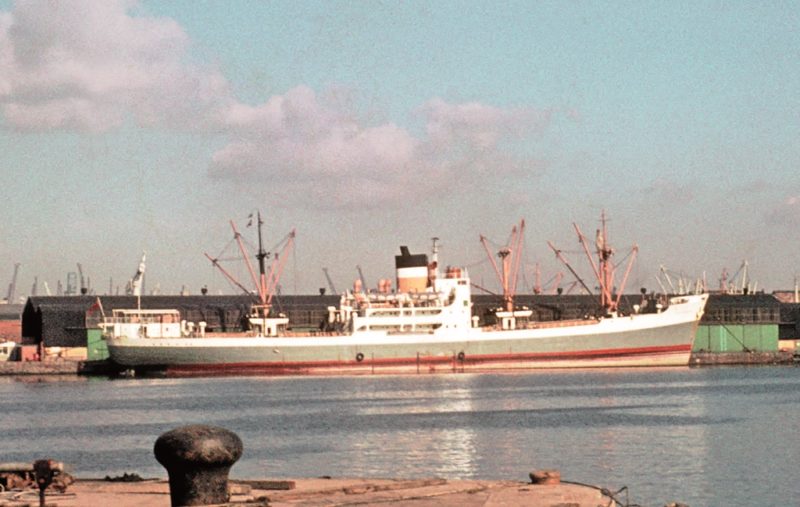
The small fruiters were ideal for conversion into useful anti-aircraft ships and convoy rescue ships and were quickly requisitioned by the Admiralty. Florentino was purchased in May 1940 for use as a blockship at Zeebrugge to block the harbour to the advancing German Army. Churruca was one of the others requisitioned for use as stores ships by the Admiralty, and was bombed and sunk at Alexandria, but was raised and returned to service. Ravens Point was damaged by sabotage in her cargo on two occasions, and had a hole blown in her hull on 15th September 1942 by a limpet mine off the North Mole at Gibraltar. Palacio was one of the fleet that served at the Normandy landings, and half of the fleet (10 ships) was lost to enemy action including Ponzano, Ciscar, Cortes, Cervantes, Calderon, Pelayo, Pozarica as an A.A. vessel, and Pinto as a convoy rescue ship. 104 company seafarers were killed in action during the war with 14 decorated for bravery including two George Medals and five MBEs.
The company express services to Gibraltar and Barcelona were resumed in 1947/48 with two new motor vessels, Pinto and Playo, of 3,422 dwt and a service speed of 15 knots from the Pallion yard of Doxford in Sunderland. They were later fitted with accommodation for four passengers in two double berth cabins. Fleet strength was now twelve ships, and flights to Spain could be booked via the recently formed MacAndrews Airways Ltd. Empire Dove had been taken as an incomplete prize at the end of the war and was managed by the company and then purchased in 1953 and renamed Pozarica, and a Swedish owned ship built on the Tees in 1948 was purchased and renamed Ponzano. The latter ship was transferred to the United Baltic Corporation (UBC) fleet in 1960 and renamed Baltic Spray.
The first of eight ‘V’ class fleet replacements was completed as Velazguez in Germany in November 1954, and was followed by her sister Valdes one month later. They were developments of the engines ‘midships Baltic Exporter class of UBC with accommodation for a dozen passengers and better cargo handling gear for the Spanish and Italian trades. The parent company had put their unique requirements to the design teams of German yards for two types of ship, one engine ‘midships and one engine aft, which could both be used in the Baltic trades of UBC and the Mediterranean trades of MacAndrews & Co. Ltd.
Three engines aft motorships of 1,605 dwt entered service in 1955 as Valdivia, Villegas and Vives and were almost identical to the Baltic Clipper class of UBC. The last company steamer, Ravens Point of 1918, was sold for further service to British owners in 1956. Three examples of a larger engines ‘midships ‘V’ class were delivered between 1957 and 1959 as Velarde, Verdaguer and Vargas of 2,740 dwt and powered by M.A.N. diesel engines to give a service speed of 16 knots. Vargas was partially adapted for the carriage of wine. Four engines aft ‘P’ class were delivered during 1961/63 as Pelayo, Palomares, Pacheco and Palacio, with the last pair having steel tanks for the carriage of wine to Sheerness. The first three of the class were built at Grangemouth and were powered by 8 cylinder Mirrlees oil engines, while Palacio was built by the Krogerwerft yard at Rendsburg on the Kiel Canal and was powered by a 9 cylinder M.A.N. diesel engine. Pelayo stranded on Livorno breakwater on 14th January 1959 while on Glynn Line service but was salved and refitted.
The MacPak service between Southampton and Bilbao was inaugurated in April 1967 by the ro-ro ferry Patricia on all year round service as the first container service between the U.K. and Spain. It was later extended to the Liverpool-Bilbao service using chartered tonnage and then by Cervantes and Churruca as fixed guides container ships, built in 1968 at Grangemouth and lengthened in 1969/70 to carry 100 containers including 20 reefers with 35 stowed on deck and the remainder in the holds. They had a lack of positive stability especially at the end of a five day voyage to the Eastern Mediterranean or the Canaries, where they loaded frozen containers with butter and open sided containers with potatoes in the islands.
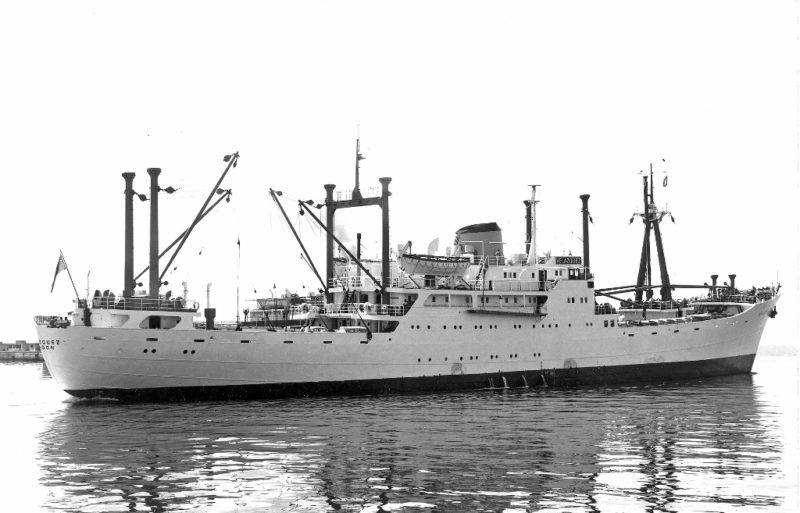
The containerisation of the Spanish services led to the sale during 1971/73 of several ships to foreign owners, and reduced the fleet to only three ships by 1973 in Palacio of 1961, and Cervantes and Churruca of 1968. A conventional cargo service was operated from Sheerness to Cadiz, Seville, Gibraltar, Tangiers, Casablanca, Safi and Agadir by Palacio and Baltic Viking, and this trio were then registered under UBC ownership in 1977, with Palacio finally sold off at the end of that year. Greater ro-ro and container capacity was offered by the new ro-ro Goya for the integrated road/sea MacPak service from Southampton to Bilbao in 1977 from the Nobiskrug yard in Germany.

Cervantes and Churruca completed their Liverpool to Spain service in late 1976 and were laid up, with Cervantes chartered to Fred. Olsen Line in February 1977 from Felixstowe to the Canaries via Rotterdam and the Victoria Terminal at Greenwich on occasion. The service was fortnightly to Tenerife and Las Palmas and occasionally to Arrecife. She had been fitted with ice knives around the propeller boss to try and reduce the excessive vibration at full speed. Churruca remained in lay up at Hull and made only one more voyage for the company under Capt. C. A. Felgate from Liverpool to Bilbao in the Spring of 1978 but was laid up again with mechanical problems until her sale in May 1979.
Goya and the last pair of 1968 sisters, Cervantes and Churruca, were sold off by the end of 1979, and this meant that the Iberian trade of MacAndrews & Co. Ltd. would then be carried only in chartered ships. A new pair of Dutch built container ships, Palacio and Pacheco of 354 TEU container capacity, were completed in 1985 for Persian Gulf, Indian Ocean and Far East charters, and were only briefly used on Mediterranean services in between charters from Felixstowe. This pair were sold off in 1992 to German owners, and were replaced by four Ellerman Mediterranean traders with the partial purchase of the Ellerman Mediterranean services from Cunard-Ellerman. The core business MacPak service from U.K. ports and Dublin to Bilbao was referred to as AWS Iberian Services from 2001. One of the quintet of Ellerman Mediterranean traders used the traditional names of Cervantes and Pacheco, and was supplemented by chartered ships such as Pelayo of 4,628 grt and built in 1995 for Draxl of Germany and renamed as City of Oporto.
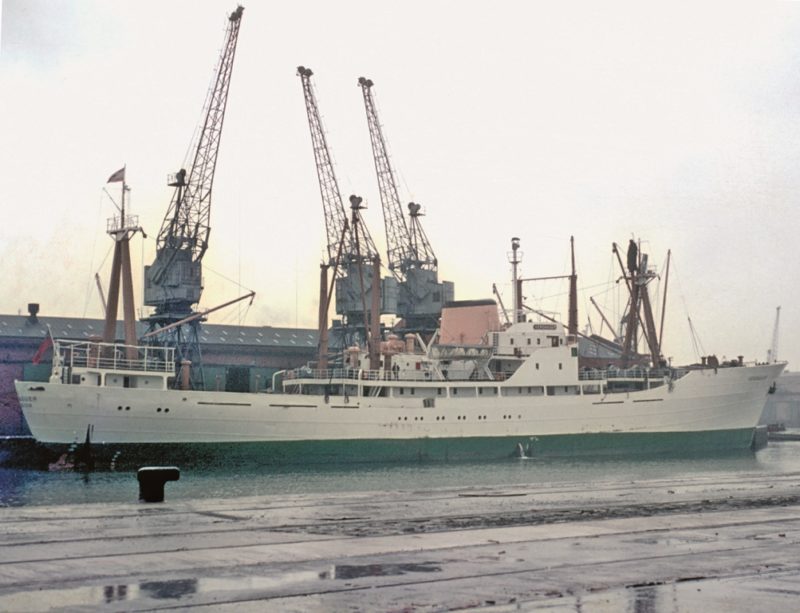
CUNARD LINE MEDITERRANEAN SERVICES
Samuel Cunard (1787-1865) was born in Nova Scotia of a Welsh family of Quakers, and with a number of investors formed the British & North American Royal Mail Steam Packet Company, the forerunner of Cunard Line, to operate the first steamer Britannia of 1,156 grt on Transatlantic service in July 1840 from Liverpool to Halifax (NS) and Boston. The British & Foreign Steam Navigation Company was established in 1851 at Glasgow to operate Mediterranean services. Sir George Burns and Charles MacIver, both of Glasgow, owned several of the Cunard Mediterranean steamers that were chartered to the British & Foreign Steam Navigation Company, with Burns supervising ship construction while MacIver and his elder brother David were responsible for the day to day management of the service.
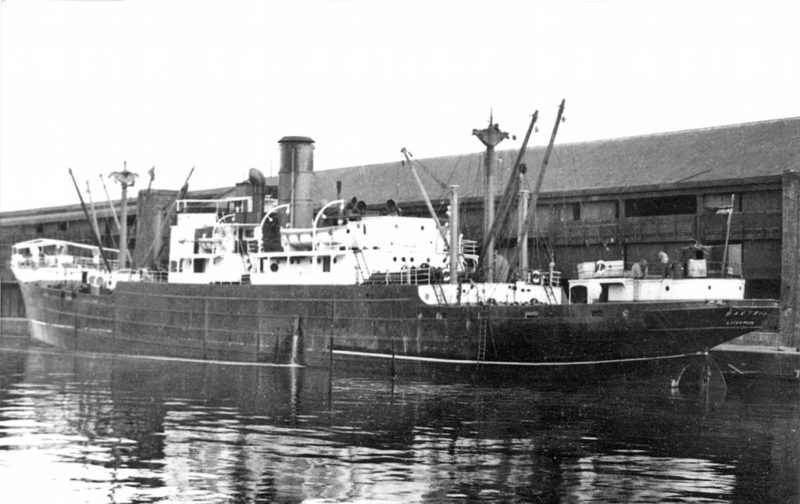
The steamers Margaret of 700 grt built by Caird of Greenock in 1839, and Shamrock of 714 grt built by Caird in 1847, and British Queen of 773 grt completed in 1849, were the first steamers on the Cunard Mediterranean service to Constantinople and the Levant. Balbec of 774 grt was completed in 1853 by Denny of Dumbarton for the same service together with her larger sisters Taurus, Teneriffe and Karnak for the Levant trade, with nine ships passing into British & Foreign Steam Navigation Company ownership in 1855 after service during the Crimean War. These were the clipper bowed Alps of 1852, Andes of 1852, British Queen of 1849, Damascus of 1855, Lebanon of 1854, Karnak of 1853, Teneriffe of 1853, Melita of 1853 and Taurus of 1853.
The steamer Lebanon was acquired from Robert Sloman of Hamburg in 1855 but was not included in the fleet of the British & Foreign Steam Navigation Company, and instead spent part of her time on Transatlantic service as a relief or extra vessel. Jura, Etna, Niagara and Andes were four Cunard ships used to transport 18,500 troops from Genoa to the Crimean War in 1855 on the orders of King Victor Emanuel II of Sardinia, a total of eleven Cunard ships had been requisitioned during the Crimean War. They returned to the Levant trade in 1856 along with Stromboli of 1856, Italian of 1855, Damascus of 1856, and were followed by a class of eight very similar ships for the Levant trade in Palestine of 1858, Atlas of 1860, Olympus of 1860, Marathon of 1862, Hecla of 1860, Kedar of 1860, Sidon of 1861 and Morocco of 1861.
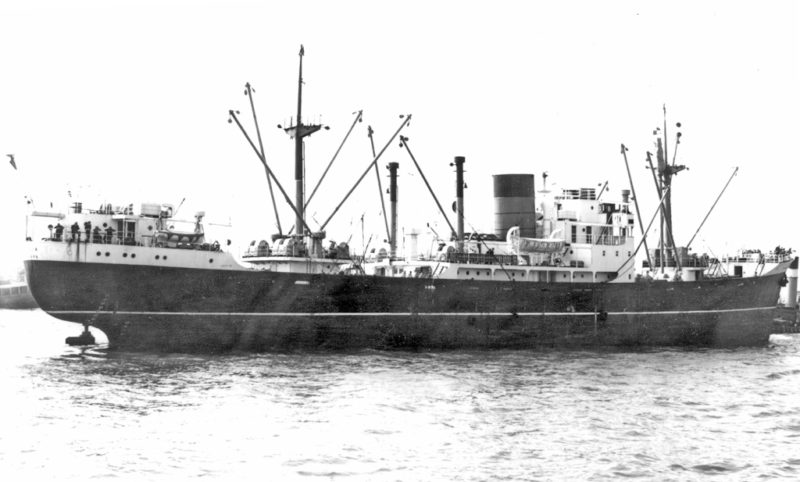
Corsica of 1,134 grt was built by J. & G. Thomson of Glasgow in 1863 for the Mediterranean service to Italy, Sardinia and Corsica. A step up in size to 2,050 grt was made for Aleppo of 1865, Tarifa of 1865, Malta of 1866, Tripoli of 1865, Palmyra of 1866, Saragossa of 1874, Cherbourg of 1875, and to 3,000 grt for Pavia of 1897, Tyria of 1897 and Cypria of 1898. Veria and her sister Brescia from yards on the Tyne and Wear were completed at the turn of the century of 3,259 grt, but while Veria became a war loss in 1917, Brescia sailed on to the Mediterranean to complete thirty years of trading.
Four Cunard Mediterranean liner traders were purchased between 1909 and 1911 in Phrygia of 3,352 grt, Thracia of 2,891 grt, Lycia of 2,715 grt and Caria of 3,032 grt. Five of these traders to the Levant were attacked or lost during World War I in Caria, Veria, Lycia, Thracia and Phrygia. The Liverpool service to all of the principal ports of the Mediterranean were resumed in 1919 with five survivors. The addresses of the company agents in the Mediterranean were:-
Gibraltar 102 Main Street
Constantinople Icin Merkez Rihtim 34
Genoa Via Cairoli 16
Livorno Piazzi Gracour 94
Lisbon Garland, Laidley & Co. Ltd.
Oporto Garland, Laidley & Co. Ltd.
Vigo Garland, Laidley & Co. Ltd.
Naples Via Guglielmo Sanfelice 59
Nice Promenade des Anglais 11
Palermo Piazza Marina 94
Piraeus Panos D. Panaguli
Patras Panos D. Panaguli
Civitavecchia Via del Tritone 155
Suez G. Beyts & Company
Trieste Via del Mercato, Vecchio 2
Venice Riva Schiavoni 4191
Zagreb (Danube) Vrhovceva 15
Four Mediterranean traders were completed between March and June 1928 by the J. L. Thompson yard at North Sands in Sunderland as Bactria, Bantria, Bosnia and Bothnia of 2,407 grt and 3,500 dwt with 200,000 cubic feet of hold space. Triple expansion steam reciprocating engines burned coal from bunkers of 114 tons to give a service speed of 11 knots. However, this quartet also served on a Transatlantic to Mediterranean trade of the Cunard America-Levant Line as well as from Liverpool, Swansea and Glasgow to Gibraltar, Spanish, French Mediterranean, Italian, Adriatic, Greek, Turkish, Black Sea and Levant ports, giving their crew of 30 plenty of opportunities to see many ports of the world.
Bosnia became the second British war loss of World War II when sunk by Prien of U47 in the Bay of Biscay two days after the liner Athenia of Donaldson Line had been sunk on the first day of the war. The three sisters of Bosnia fortunately survived the war and continued trading to the Mediterranean and the Black Sea until they were sold off during 1954/56.
A standard engines aft C1-M-AV1 type of 3,834 grt and 5,925 dwt was purchased in 1945 as Hickory Isle and was renamed Brescia (2). The Cunard Mediterranean fleet was expanded with a trio in 1953/54 from the William Hamilton yard at Port Glasgow of 3,411 grt and 4,340 dwt named Pavia (2), Lycia (2) and Phrygia (2). They carried 7,250 cubic feet of refrigerated cargo, with the bridge house of Pavia being one deck lower than her two sisters, and they were motorships fitted with four cylinder 2SCSA Doxford oil engines giving a service speed of 13 knots. They gave over ten years of service before all three were sold to the same Greek owner in 1966, and were replaced by the chartered Johanna and Leabeth.
Chartered tonnage continued to be used on the Cunard Mediterranean service until Cunard via its parent of Trafalgar House Plc purchased the Ellerman shipping, brewing and business interests for £24.1 million to create Cunard-Ellerman in 1987. Five Ellerman engines aft motorships built at Appledore in Devon during 1978/81 carrying 296 TEU of containers with Ellerman ‘City’ names continuing the Cunard name in the Mediterranean until the last of the quintet was sold off in the mid 1990s. The famous name of Cunard was then carried on by sun seeking cruise liners operating from Miami to the Caribbean and on Round the World cruises, as well as on other types of adventure cruising ships.
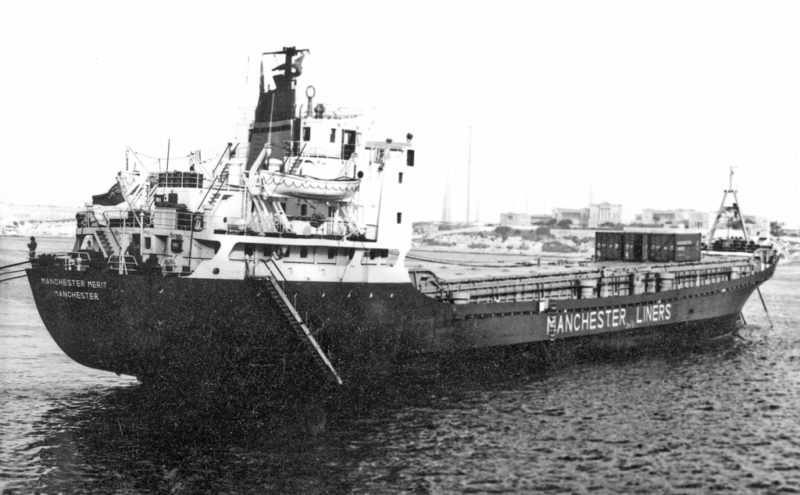
MANCHESTER LINERS MEDITERRANEAN SERVICES
The famous Canadian service of Manchester Liners Ltd. had operated from Manchester to Montreal and later to Canadian Great Lakes ports for over 70 years when Prince Line withdrew in late 1968 from sailings from Manchester, and Manchester Liners then took over their agents Gough & Crosthwaite. The container ship Manchester Merit took her first Mediterranean container sailing in 1971 to open up a route as far as Israel, with Piraeus in Greece following in 1974. In July 1975 a new service was established to Iranian ports via the Mediterranean ports of Piraeus, Iskenderun (Turkey), Lattakia (Syria), Larnaca and Limassol (Cyprus) and Haifa in Israel. The ports were served by chartered container vessels such as the German flag Manchester Faith, the Spanish flag Manchester Merit, and the sisters Manchester Vigour and Manchester Zeal from the Appledore shipyard in Devon in 1973.
The Johnston-Warren Line service to Greece and the Black Sea had ceased in 1969/70. A container capacity of up to four hundred TEU of containers loaded into the guides of three cellular holds or on deck in very economical chartered ships began to take trade away from competitors. These chartered ships had ‘MANCHESTER LINERS’ emblazoned on both sides of their hulls.
On the evening of 13th February 1980, Furness, Withy (Shipping) Ltd., the parent company of both Manchester Liners Ltd. and Prince Line, was taken over by C. Y. Tung of Hong Kong for £4.20 per share.
Crown Prince and Royal Prince had been completed in 1979 by the Walker Naval Yard of Swan Hunter Shipbuilders on the Tyne as the last ships on the Prince Line Mediterranean service. Container capacity of this pair was 288 TEU of containers with 156 containers in two fixed guides cellular holds. A service speed of 15 knots was obtained from a three cylinder 2SCSA Doxford opposed piston oil engine of 5,500 bhp. They had an advanced Loadmaster computer to allow forward planning and stowage of the containers, which could be stacked three high on deck.
In June 1982, Royal Prince was involved in the rescue of British subjects from war torn Beirut, picking them up from the small port of Jounieh to the north. Manchester-Prince Line through services from Malta were then terminated at Piraeus and other ports until the battles in Beirut subsided two months later.
Competition with Ellerman Lines to the Mediterranean had intensified by the late 1970s, and the two lines then decided to co-operate, with Ellerman feeding Manchester Liners container ships with cargo from Portugal, and by taking further trade from other foreign competitors forced one of these out of business. Thus, in 1982, the Mediter-anean services of Prince Line and Manchester Liners were merged to become Manchester-Prince Line. In July 1983, a combined Mediterranean service was started by Manchester-Prince Line, Ellerman Line and Zim Israel Line, with a service from the North West ports of Ellesmere Port and Dublin, and another from London. Ellerman Line and Zim Israel Line already operated from Ellesmere Port, but for Manchester Liners it meant the sad closure of its original services from Manchester. Crown Prince was renamed Manchester Crown, and her sister Royal Prince was renamed City of Oporto, and they ran in a joint service with three Ellerman sisters of 4,200 dwt plus Zim Line chartered vessels. The two Prince Line container ships were sold off in 1985 to Far East interests for service on their 15 day container route between Bangkok and Hong Kong, with only the Manchester Trader still trading.
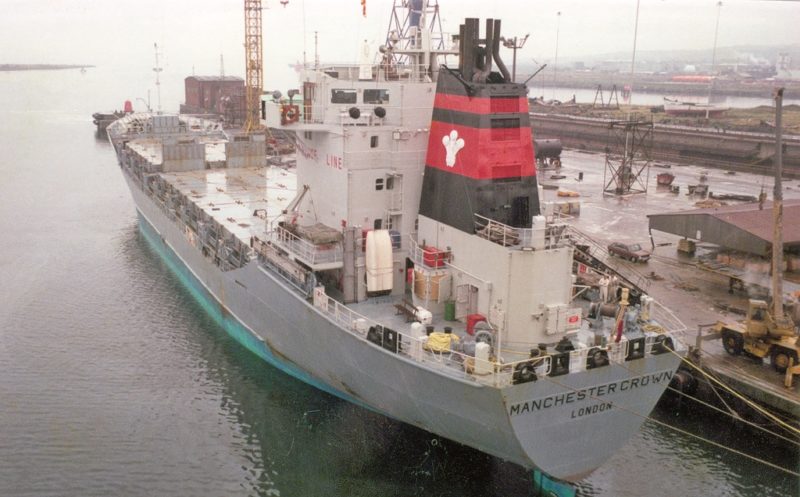
POSTSCRIPT
The Mediterranean fleets described in this article span a period of two hundred years from 1820 to 2020, but it is very pleasing to see that British ships still sail on liner voyages to the Mediterranean today. MacAnd-rews & Company were always very eager to emphasise their long history in a slogan of ‘Two Centuries of Trading’. The distance from Gibraltar to Port Said is a very long 1,927 nautical miles, thus the freight rates and fuel costs for Egypt and the Levant are very much higher than those to Portugal and Seville. Greece has two thousand islands and many small ports as well as the main ports of Piraeus, Patras and Thessaloniki, and to the big Mediterranean islands of Sicily, Corsica and Sardinia must be added the four Balearic islands and many others such as Cyprus, Malta and Pantellaria. The Mediterranean and Black Sea have very many small and large ports with an attendant real risk of going aground on sandy bars or rugged rocky shores. This article is a tribute to the many British shipowners and seafarers that made the fabled ‘Middle Sea’ of the Mediterranean their own for a very long period of over two centuries, and to those still trading there.
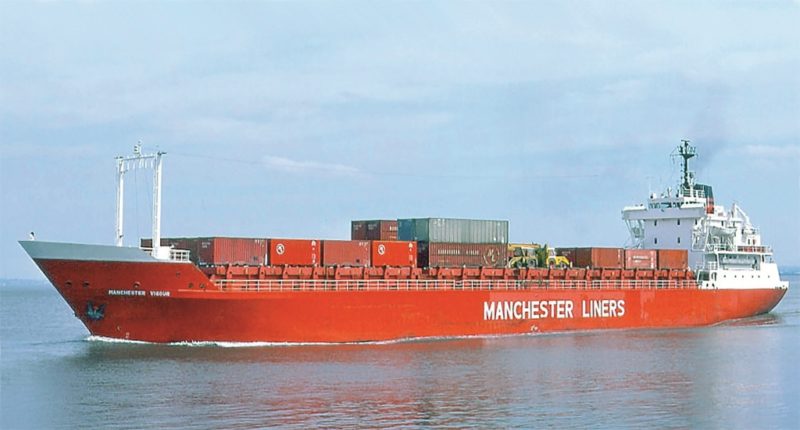
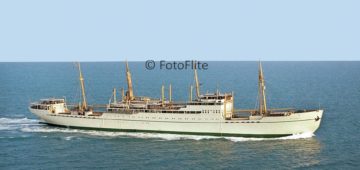


Comments
Sorry, comments are closed for this item